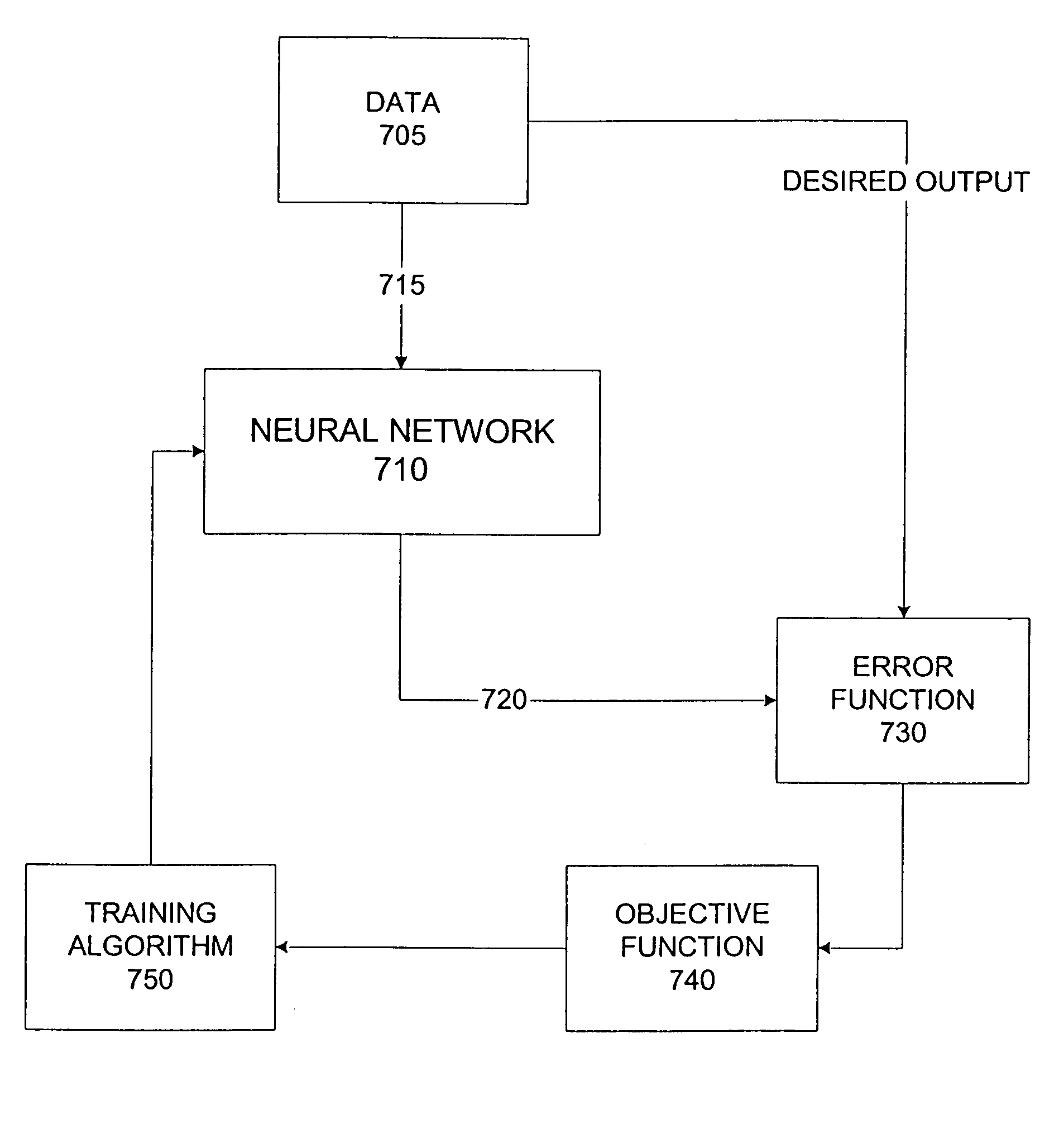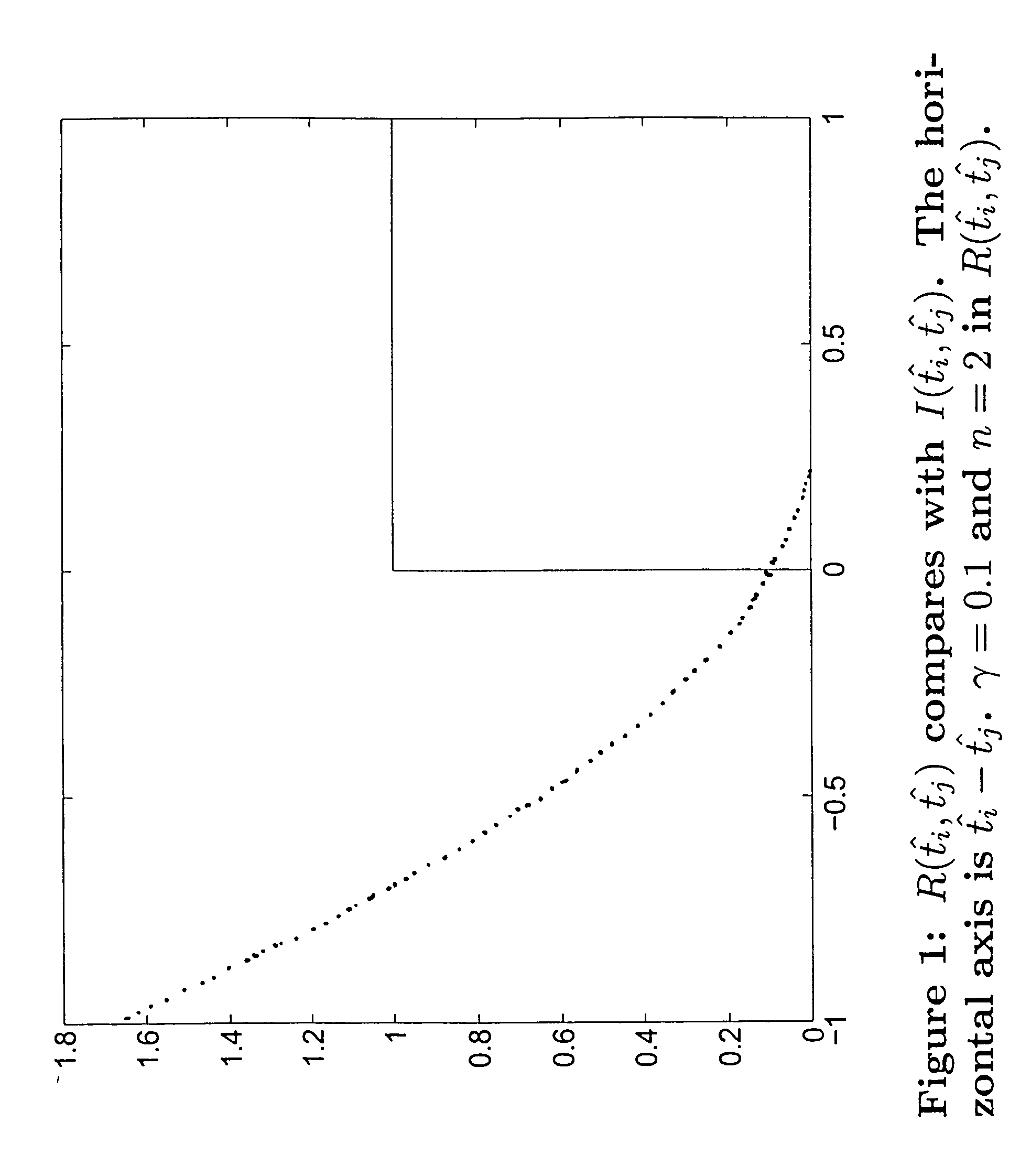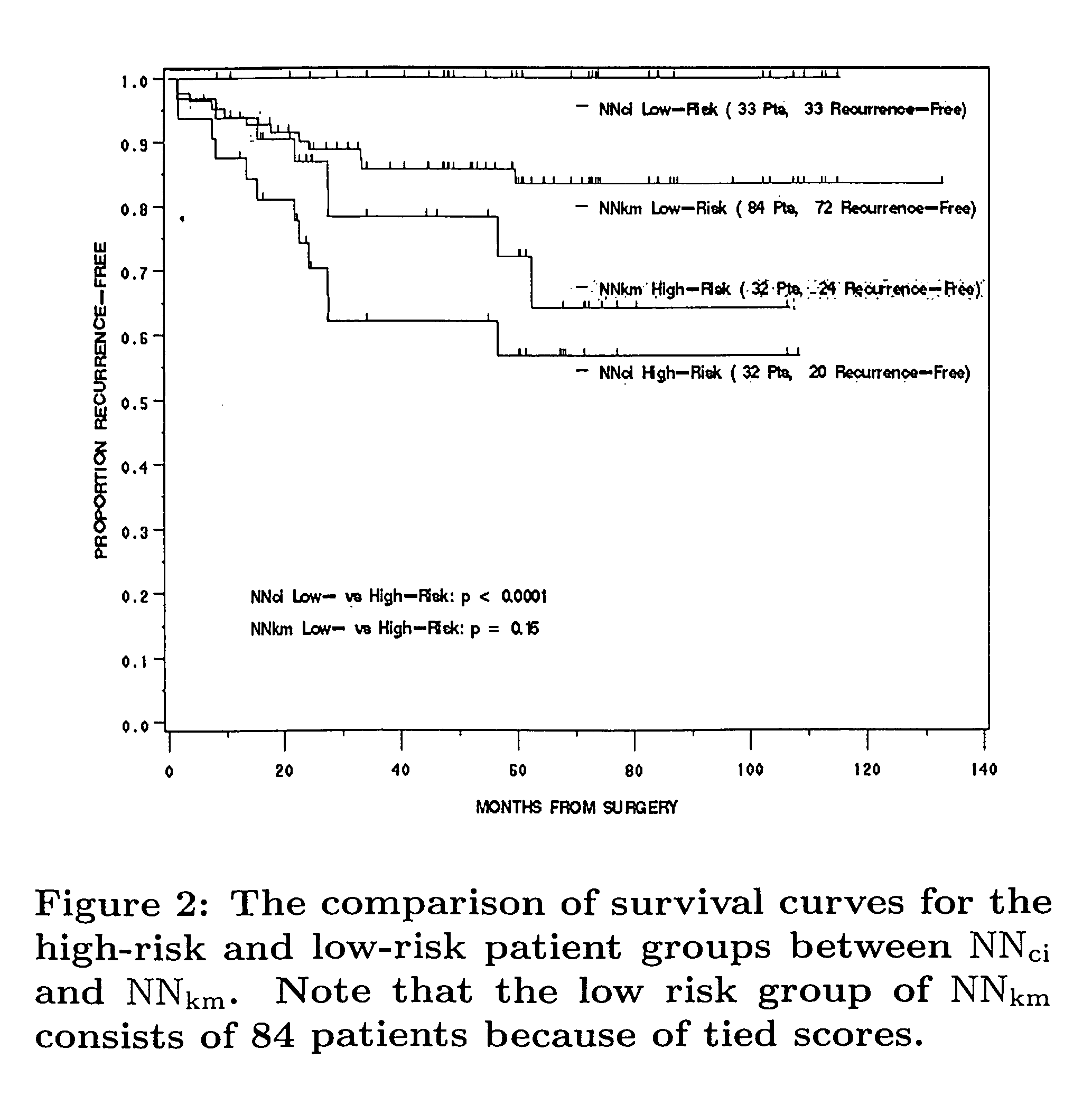Methods and systems for predicting occurrence of an event
a technology of event occurrence and prediction method, applied in the field of event occurrence analysis, can solve the problems of censored data, current most accurate learning model, and inability to make use of such data, and achieve the effect of improving the prediction of an event occurrence and effective predictive model
- Summary
- Abstract
- Description
- Claims
- Application Information
AI Technical Summary
Benefits of technology
Problems solved by technology
Method used
Image
Examples
Embodiment Construction
[0028]Neural networks are a form of artificial intelligence which functions to imitate the way a human brain works. A neural network typically comprises a plurality of weighted, interconnected processing elements, to emulate neurons of a brain. The organization of the processing elements and the weights of the connections between the elements determine the output. Generally, neural networks may be effective for predicting events, but typically require large amounts of data to do so.
[0029]A supervised model (e.g., predictive, prognostic) for a neural network is used to train a neural network to solve particular problems, for example, to predict an occurrence of an event. The supervised learning model trains the neural network by providing it with inputs and desired outputs. These inputs and desired outputs are referred to as training data. The difference between what is actually output by the network and the desired output is then used by a training algorithm in the model to change t...
PUM
| Property | Measurement | Unit |
|---|---|---|
| time | aaaaa | aaaaa |
| recurrence time ti | aaaaa | aaaaa |
| recurrence time tj | aaaaa | aaaaa |
Abstract
Description
Claims
Application Information
 Login to View More
Login to View More - R&D
- Intellectual Property
- Life Sciences
- Materials
- Tech Scout
- Unparalleled Data Quality
- Higher Quality Content
- 60% Fewer Hallucinations
Browse by: Latest US Patents, China's latest patents, Technical Efficacy Thesaurus, Application Domain, Technology Topic, Popular Technical Reports.
© 2025 PatSnap. All rights reserved.Legal|Privacy policy|Modern Slavery Act Transparency Statement|Sitemap|About US| Contact US: help@patsnap.com



